Cover
Table Of Contents
Copyright
Credits
About the Authors
About the Reviewer
Preface
What this book covers
What you need for this book
Who this book is for
Conventions
Reader feedback
Customer support
Downloading the example code
Errata
Piracy
Quetions
Chapter 1. Playing with LLVM
Modular design and collection of libraries
Getting familiar with LLVM IR
LLVM tools and using in the command line
Summary
Chapter 2. Building LLVM IR
2.1 Creating an LLVM module
2.2 Emitting a function in a module
2.3 Adding a block to a function
2.4 Emitting a global variable
2.5 Emitting a return statement
2.6 Emitting function arguments
2.7 Emitting a simple arithmetic statement in a basic block
2.8 Emitting if-else codition IR
2.9 Emitting LLVM IR for loop
2.10 Summary
Chapter 3. Advanced LLVM IR
3.1 Memory access operations
3.2 Getting the address of an element
3.3 Reading from the memory
3.4 Writting into a memory location
3.5 Inserting a scalar into a vector
3.6 Extracting a scalar from a vector
3.7 Summary
Chapter 4. Basic IR Transformations
4.1 Opt Tool
4.2 Pass and Pass Manager
4.3 Using other Pass into in current Pass
4.4 AnalysisUsage::addRequired<> method
4.5 AnalysisUsage::addRequiredTransitive<> method
4.6 AnalysisUsage::addPreserved<> method
4.7 Instruction simplification example
4.8 Instruction Combining
4.9 Summary
Chapter 5. Advanced IR Block Transformations
5.1 Loop processing
5.2 Scalar evolution
5.3 LLVM intrinsics
5.4 Vectorization
5.5 Summary
Chapter 6. IR to Selection DAG phase
6.1 Converting IR to selectionDAG
6.2 Legalizing SelectionDAG
6.3 Optimizing SelectionDAG
6.4 Instruction Selection
6.5 Scheduling and emitting machine instructions
6.6 Register allocation
6.7 Code Emission
6.8 Summary
Chapter 7. Generating Code for Target Architecture
7.1 Sample backend
7.2 Defining registers and register sets
7.3 Defining the calling convertion
7.4 Defining the instruction set
7.5 Implementing frame lowering
7.6 Lowering instructions
7.7 Printing an instruction
7.8 Summary
Index
A
B
C
E
F
G
I
L
M
N
O
P
R
S
T
V

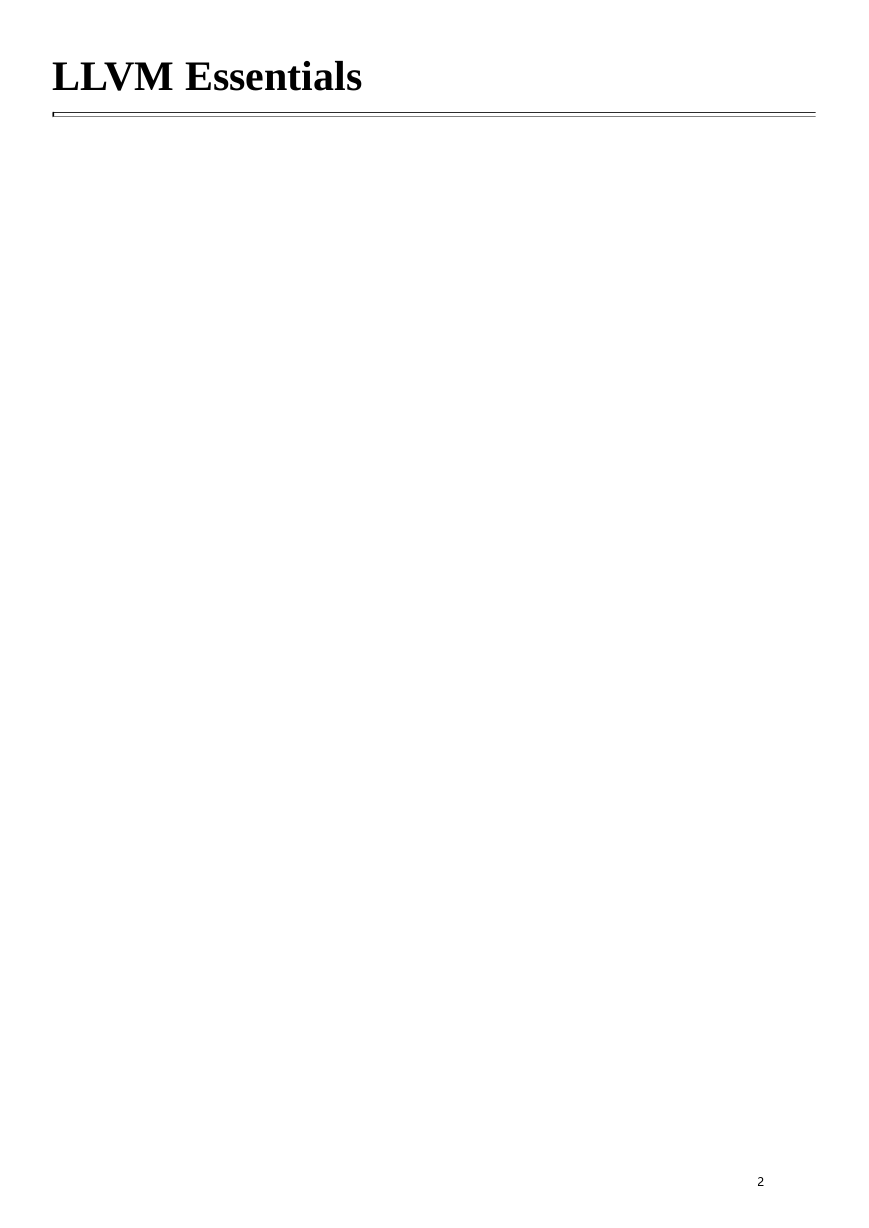
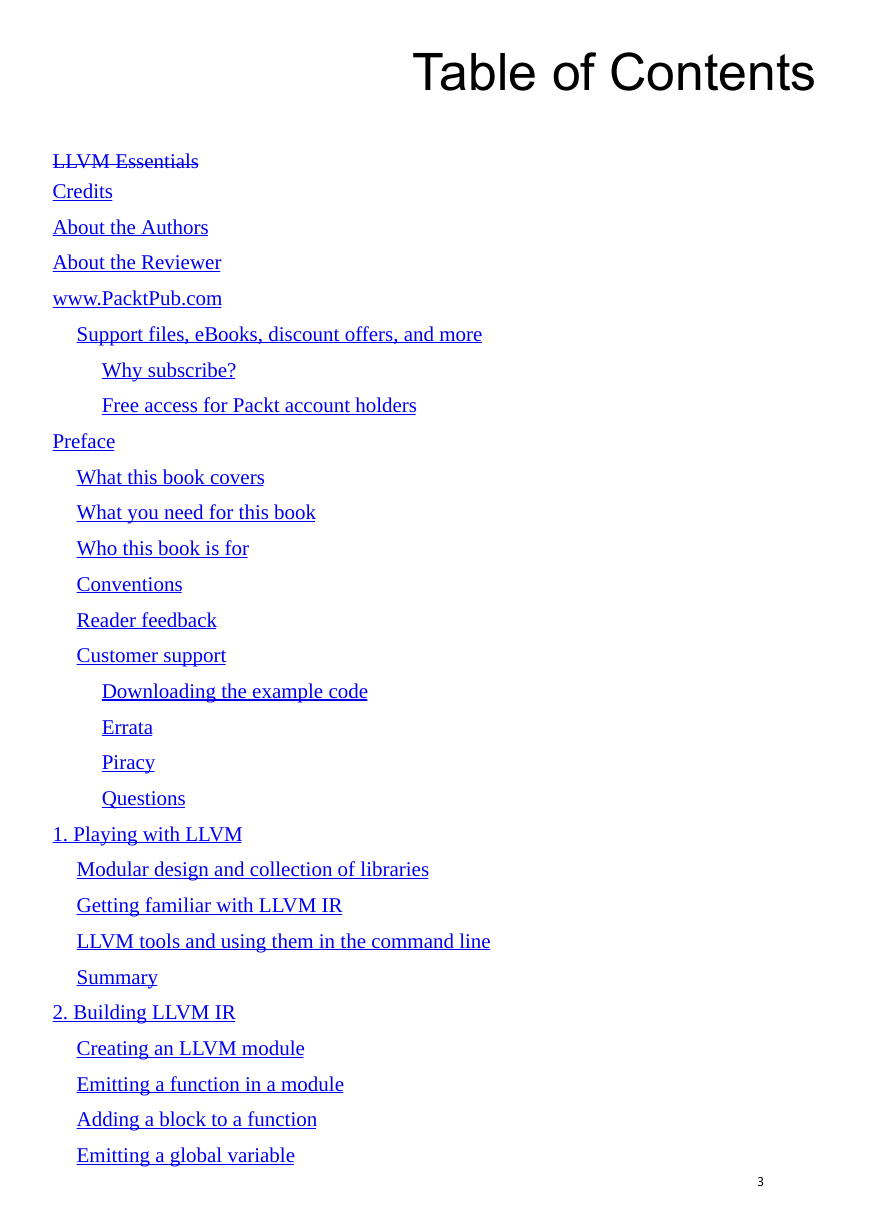
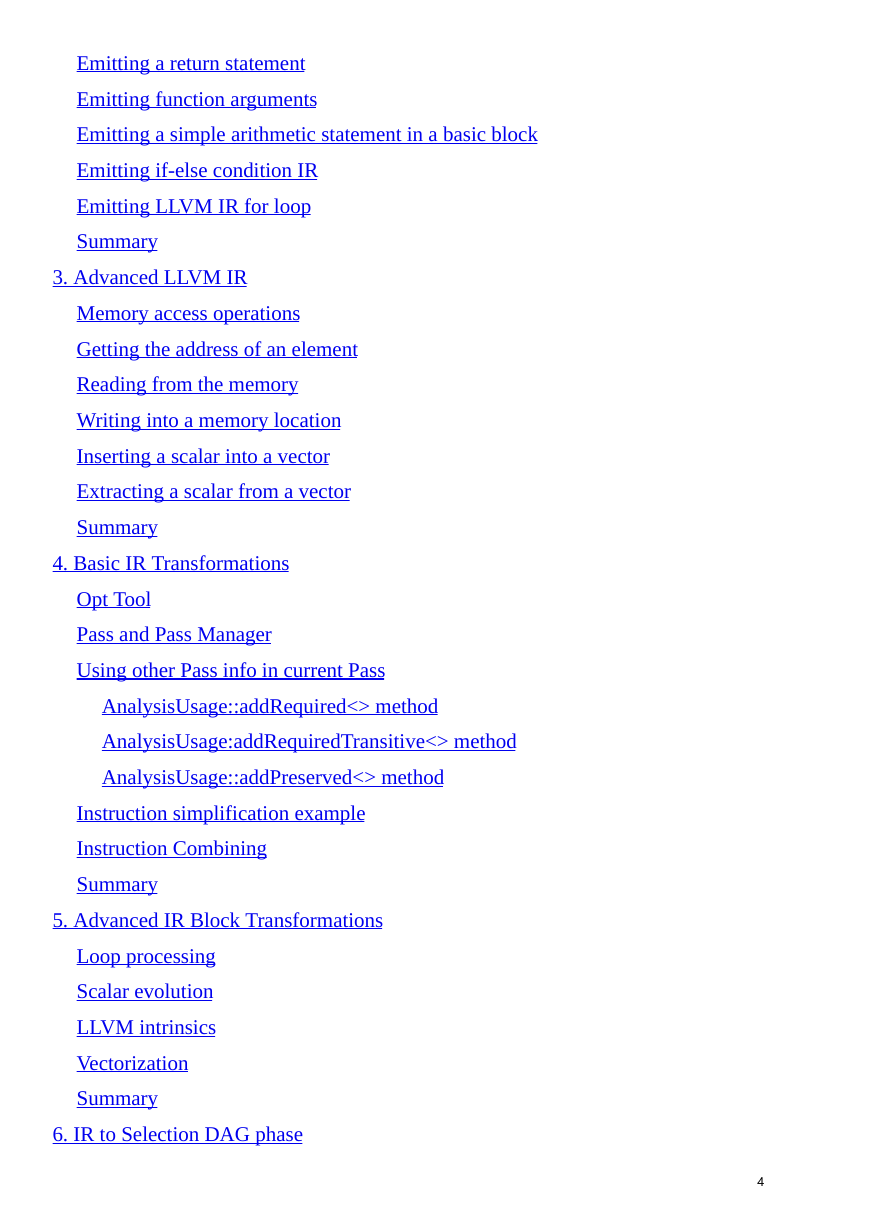
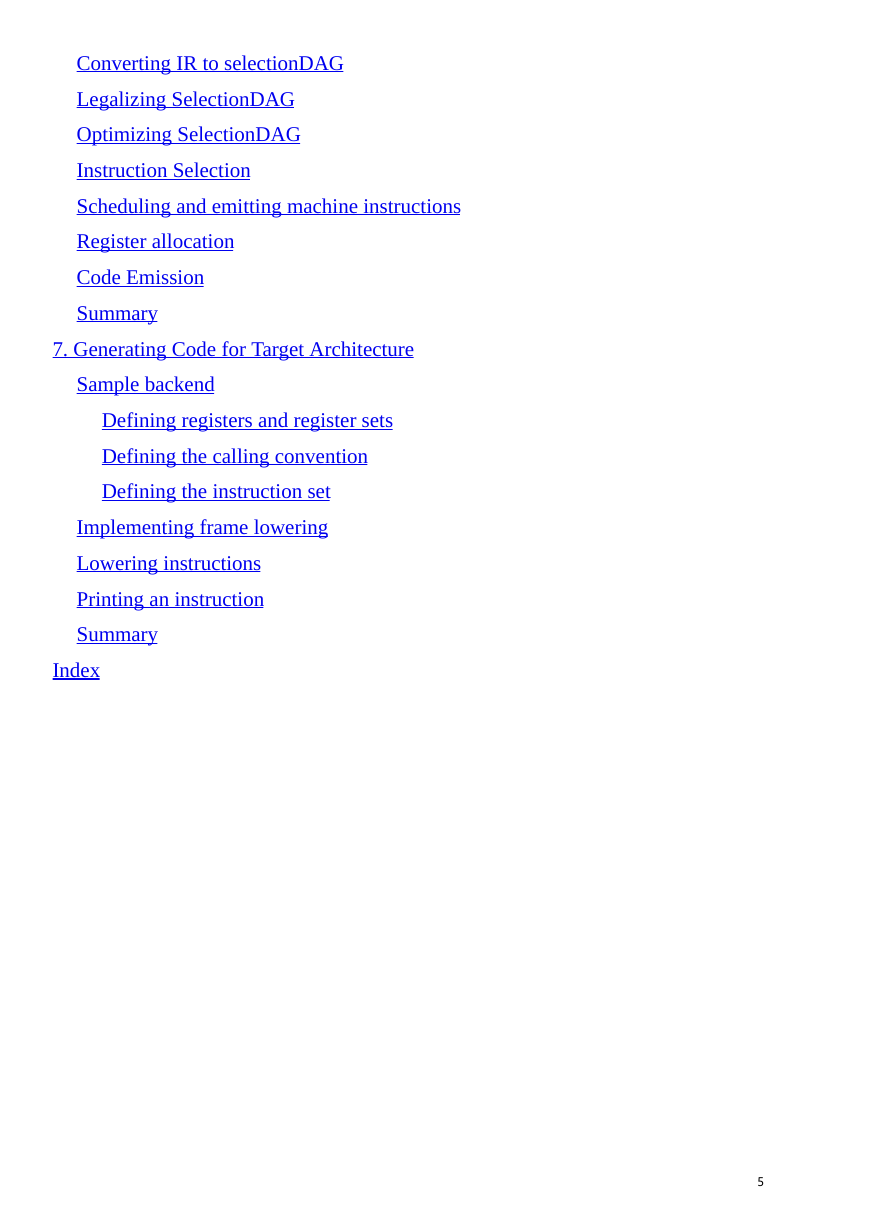
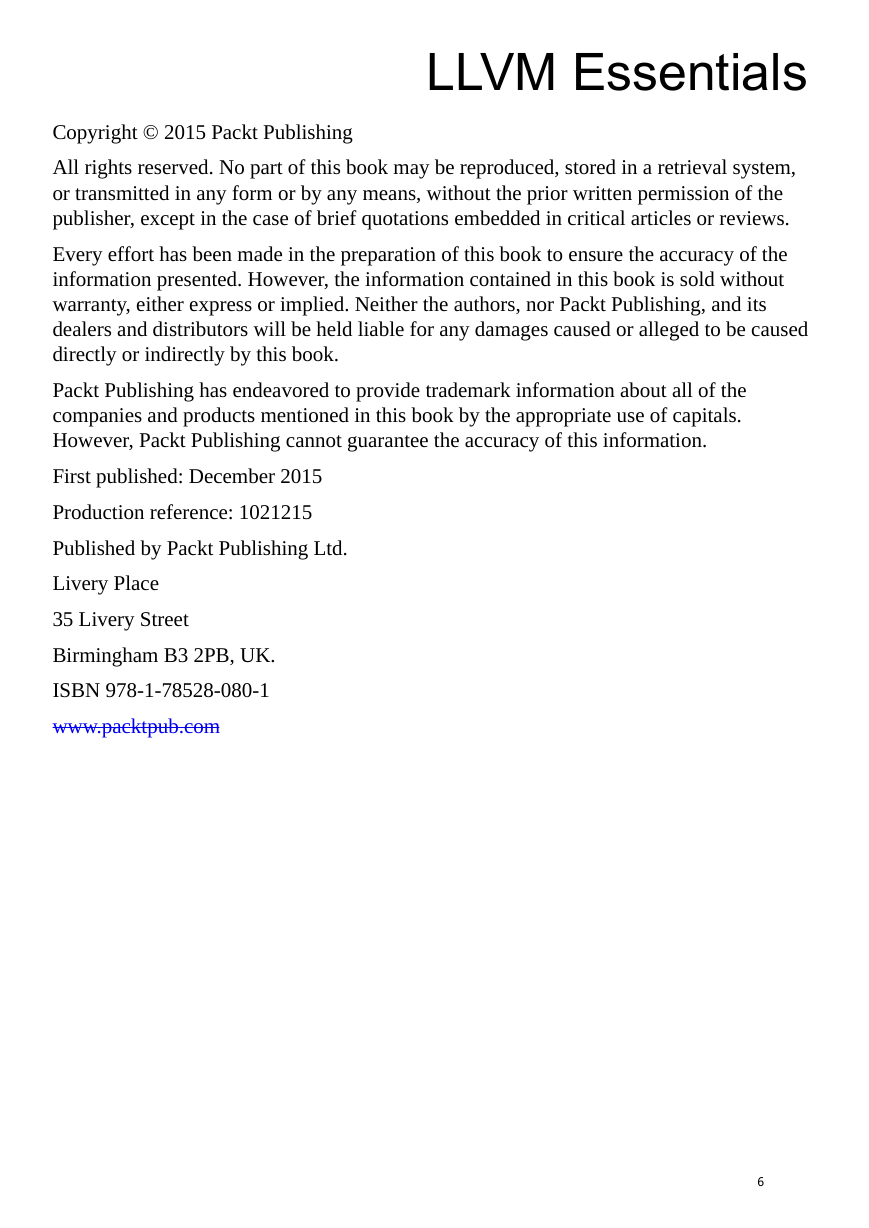

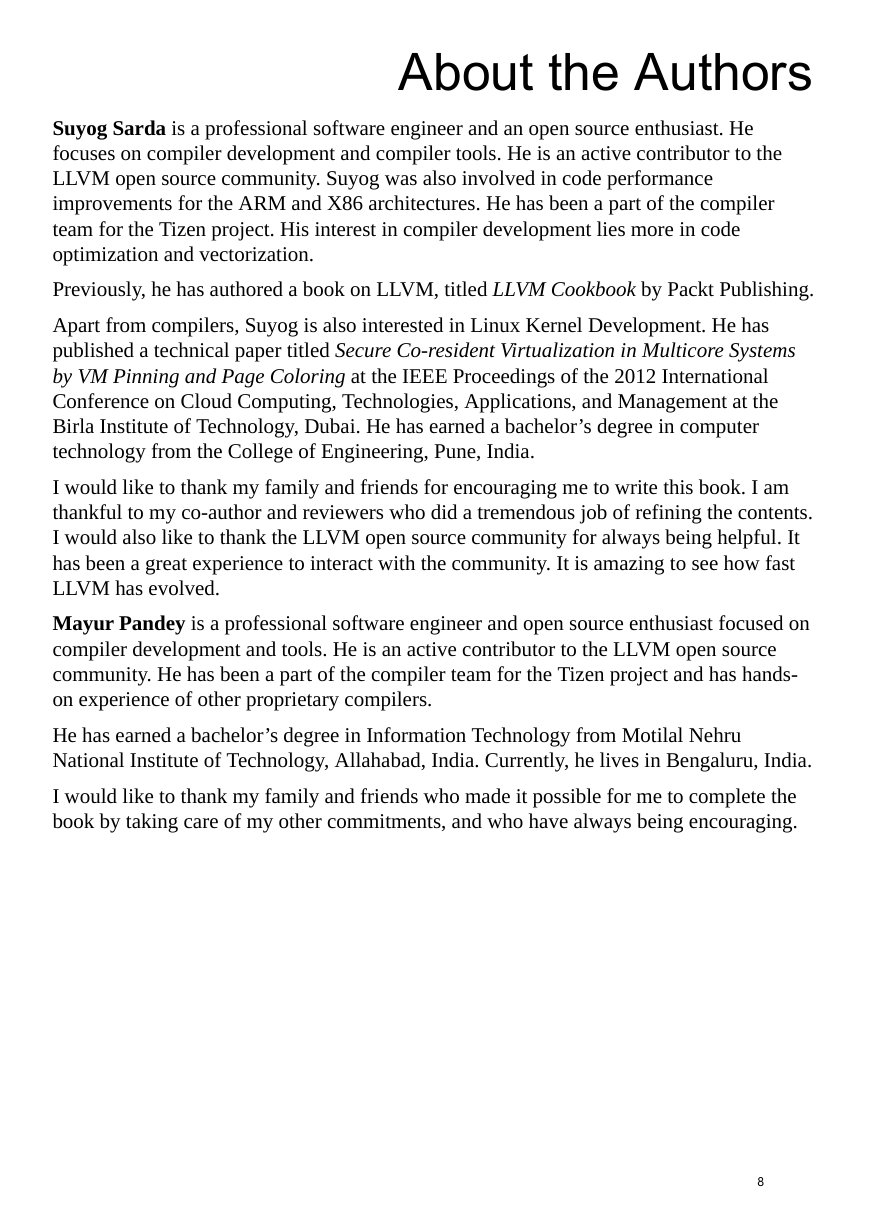








 2023年江西萍乡中考道德与法治真题及答案.doc
2023年江西萍乡中考道德与法治真题及答案.doc 2012年重庆南川中考生物真题及答案.doc
2012年重庆南川中考生物真题及答案.doc 2013年江西师范大学地理学综合及文艺理论基础考研真题.doc
2013年江西师范大学地理学综合及文艺理论基础考研真题.doc 2020年四川甘孜小升初语文真题及答案I卷.doc
2020年四川甘孜小升初语文真题及答案I卷.doc 2020年注册岩土工程师专业基础考试真题及答案.doc
2020年注册岩土工程师专业基础考试真题及答案.doc 2023-2024学年福建省厦门市九年级上学期数学月考试题及答案.doc
2023-2024学年福建省厦门市九年级上学期数学月考试题及答案.doc 2021-2022学年辽宁省沈阳市大东区九年级上学期语文期末试题及答案.doc
2021-2022学年辽宁省沈阳市大东区九年级上学期语文期末试题及答案.doc 2022-2023学年北京东城区初三第一学期物理期末试卷及答案.doc
2022-2023学年北京东城区初三第一学期物理期末试卷及答案.doc 2018上半年江西教师资格初中地理学科知识与教学能力真题及答案.doc
2018上半年江西教师资格初中地理学科知识与教学能力真题及答案.doc 2012年河北国家公务员申论考试真题及答案-省级.doc
2012年河北国家公务员申论考试真题及答案-省级.doc 2020-2021学年江苏省扬州市江都区邵樊片九年级上学期数学第一次质量检测试题及答案.doc
2020-2021学年江苏省扬州市江都区邵樊片九年级上学期数学第一次质量检测试题及答案.doc 2022下半年黑龙江教师资格证中学综合素质真题及答案.doc
2022下半年黑龙江教师资格证中学综合素质真题及答案.doc